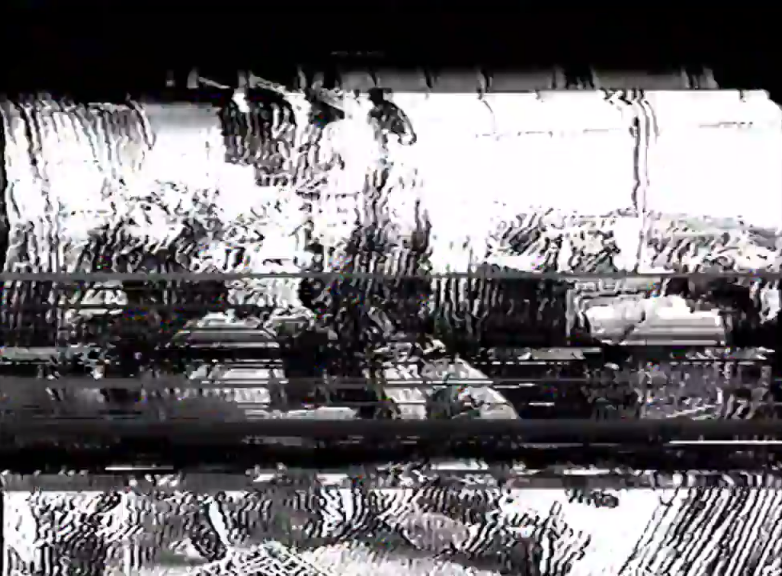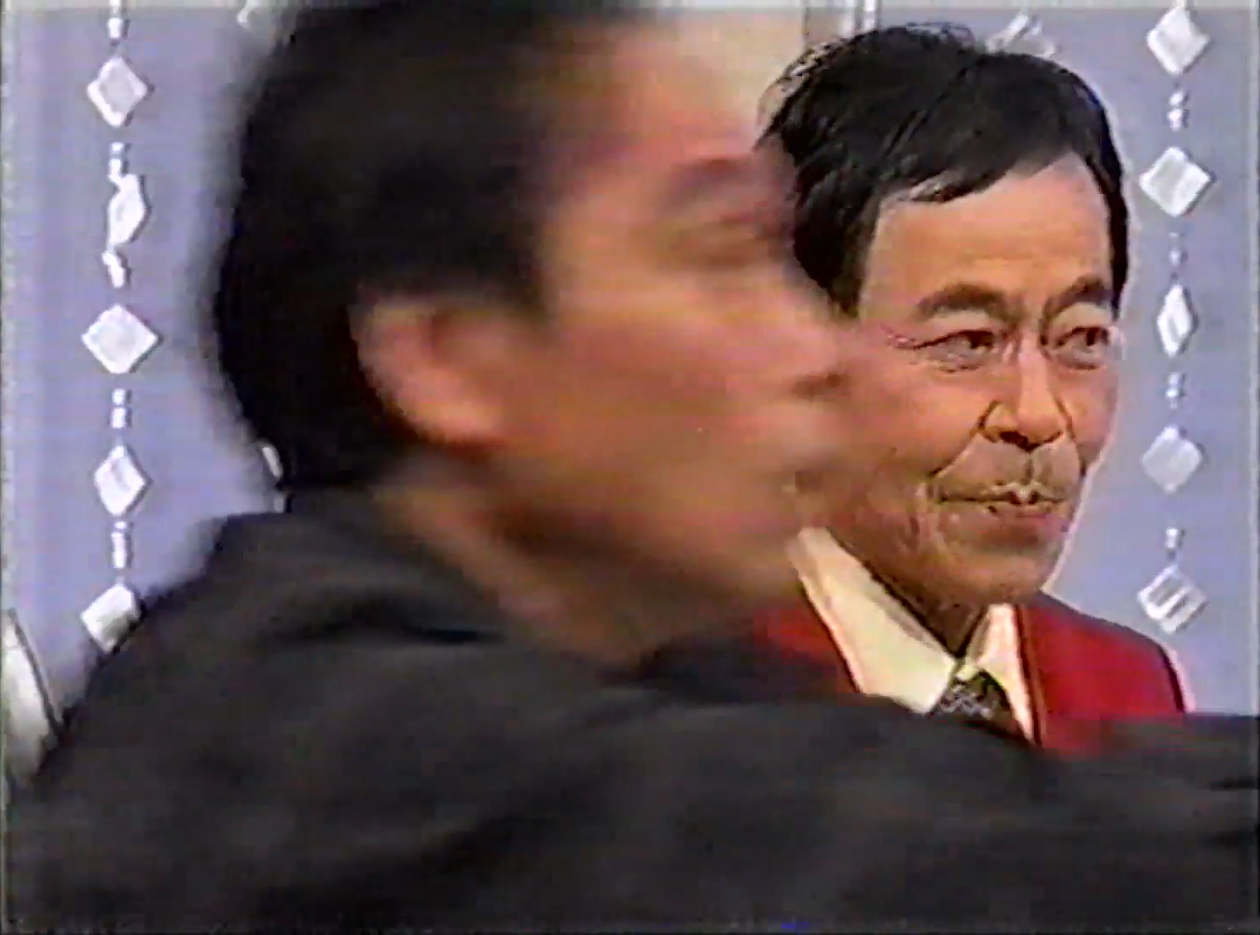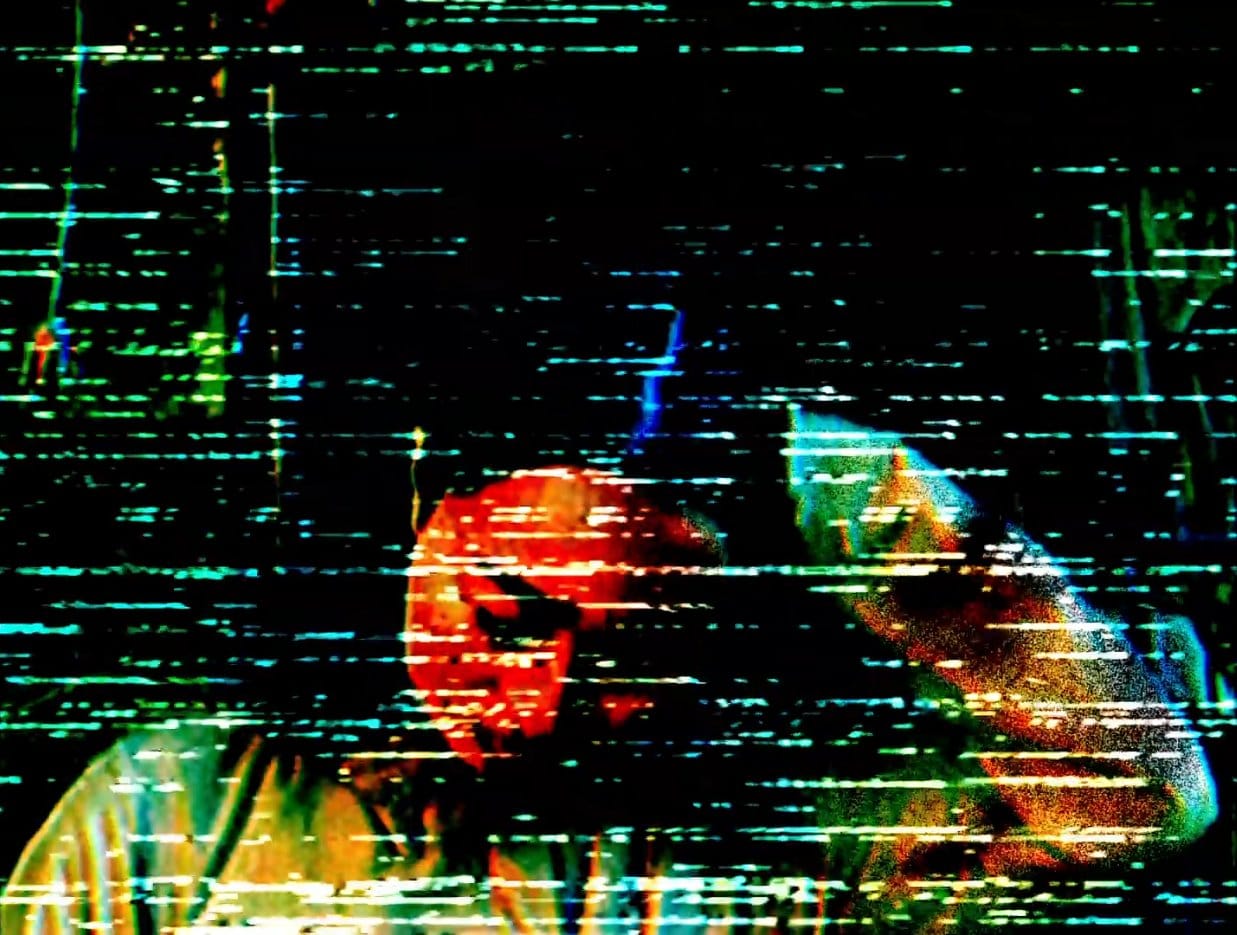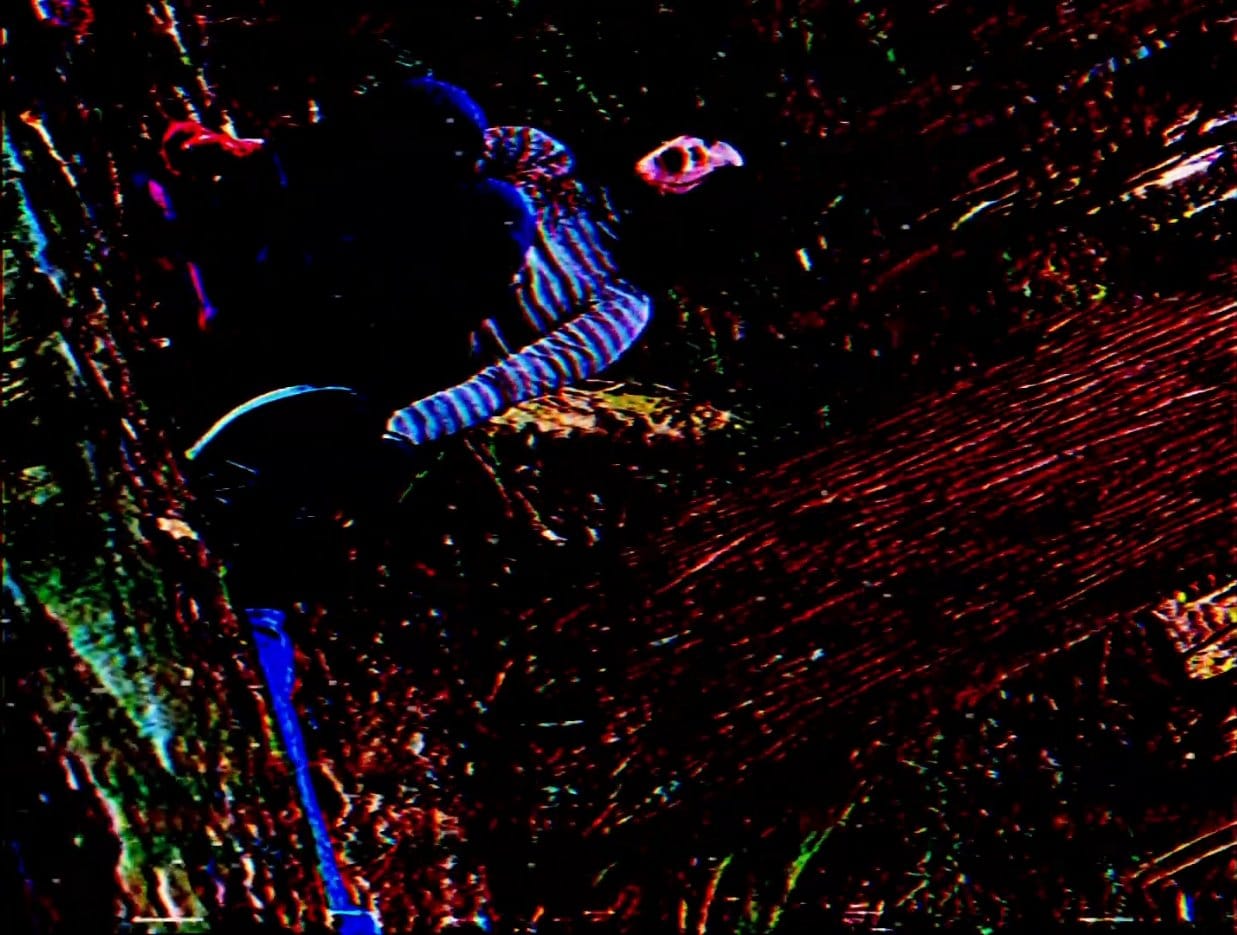Talking tv - TXQ Fiction: "Looking for Kikue Ishinaga"
What happens when the best minds of faux-documentary and found footage horror set their sights on TV

You don’t really see them anymore, but TV used to be full of phones. The telethon was everywhere, advertising some DVD compilation or album box set, or raising money for a charity, or trying to help all those poor little animals, variety show fun and clips and interviews would play out in front of a sea of workers sitting in front of phones that you—yes you—could call in to and order or donate. When I was a kid, I always wondered if they really were live. If I called in, would I see myself in some way in one of those anonymous people in the background picking up a phone? And if they did, would I even be able to tell? Were there enough people there for that to even work? Maybe they had a whole room in the back out of view filled with even more phones, or maybe the people on stage were just actors pretending, or maybe this was all planned out from the start and filmed months beforehand and they just replayed the same fake live show every couple of weeks. There was no way to know. Maybe it was real, maybe it was fake; those hotline specials existed in a world in-between.

This year, a telethon of sorts aired in Japan. Split up over the course of three weeks, it was dedicated to finding a missing person, calling on the power of viewers to gather information on a woman who had disappeared decades ago. They hardly had anything to go on—just a name, a description from the man who’d been looking for her all these years, and a questionable AI generated reconstruction of a half-destroyed photograph. It was nothing, a hopeless endeavor. It was also fake.
“Looking for Kikue Ishinaga”, the first season of the show TXQ Fiction, is four episodes of voyeuristic true-crime-cum-horror delights. Airing without any fanfare, truth only betrayed by the brief title logo opening each episode, the show represents some of the most electric television of the year, a deliciously slow-paced, contained, increasingly suffocating rabbit hole of fakery and suggestion, faux-documentary and found footage creeping their way into mainstream media. And it comes straight from some of the best minds in horror.



I’ve talked before about Fake Documentary Q, a small-teamed YouTube channel producing some of the greatest horror in the world right now. They’re a group obsessed with the way we capture our world, each video taking the shape of some different media format. One episode is shot on an early digital camcorder, one recovered from old VHS tapes. Others document an early blog, or answering machine recordings, or security footage. They embody that popular quote from Brian Eno—“Whatever you now find weird, ugly, uncomfortable and nasty about a new medium will surely become its signature.”—more than just about anyone else out there, wringing horror from the death of art, from skipping discs, distorted audio, static and warping.
These are the people making up half the creative team of TXQ Fiction, and it isn’t hard to tell. As “Looking for Kikue Ishinaga” continues, callers sending in more and more footage and audio that may or may not be clues to the woman’s disappearance, the show increasingly becomes mired in media. Cell-phone footage blasted with night artifacts, Go-Pro on the head YouTube videos, old analog photographs, answering machines, 16mm film and VHS…it’s all here, time temporally collapsing on the tv, where forty year old recordings and current day livestreams can exist at the same. Capture enough moments, and the past stops being the past.

The other half of TXQ Fiction comes from a man named Tokio Omori. A rising star in the world of Japanese television (making it into the country’s 30 Under 30 list—a list mostly dominated by musicians) for about a year now Omori has been terrorizing TV with falsities. Here’s a documentary show about two comedians traveling Japan and exploring new topics each week and oops they find a death cult of personality; here’s a talk show about self-help life hacks and uh-oh turns out it’s aliens infiltrating human society. He leans towards big concept satire, strange and frequently hilarious take-downs of modern culture that gradually unfurl, becoming more and more heightened as they go, but his work only succeeds because his eye for the everyday rhythm and detail of Japanese television is second to none. He gets the personalities and the design of sets, he gets the obsessive use of infographics and the potential inherent in the constant use of giant subtitles, he gets that delicate balance between short improv and guided teleprompter reading. He even gets the cameras right, delighting in cheap digital.

Here, his deep understanding of both the feel of non-drama programming and its nebulous position between fiction and reality comes through heavy. “Looking for Kikue Ishinaga” is full of empty self-seriousness. It’s spartan, with a cheap, clean set and talking heads amounting to just a host, a talent (basically media personality), and a retired police officer, all of whom never crack a smile and are forced to pretend even the most obviously false information or nonsense calls are Important or Might Mean Something. These people who are not experts or who once were but haven’t been for a while now sit in their hermetic little room, imagining, debating, questioning this cold case without ever really saying a thing.

And the viewers eat it up. Calls flood in clearly looking for attention, suggestions of this mysterious woman worming their way into memories. “I saw her at the park,” “I head someone calling her name at the hospital.” Everyone wants to be a part of it, they want to have a hand in solving a mystery. It is, at the end of the day, entertainment to them and to us. It’s a story, and who doesn’t want to be part of a story?
If I’ve talked about Fake Documentary Q once before, then I’ve talked about true crime a thousand times. It’s impossible to ignore cruelty of true crime just like its impossible to ignore how it encourages obsession and at times violent self-insertion. We see it in podcasts where giddy wino hosts crack jokes at tragedy and push these crimes into the realm of safe fantasy; we see it in tv shows like Dateline that turn the ruination of real lives into melodramatic horror stories and spread a paranoia in its viewers; we see it in online communities coming together to dox and threaten and bully under the pretense of solving mysteries. All of these escalate on top of each other, creating a potent cocktail of fears of the evils of the world and a paradoxical desire to be a part of them in some way (not like…in a murder way, but in a closeness to these narratives). Worst of all, it works. It really is fun. I’ve liked plenty of pretty objectively Not Great true crime and I’m sure I’ll like plenty more. It’s addicting. It makes the world seem different. The people calling in to find Kikue and lying are as normal as they come.



For a long time, nothing much happens in the hunt for Kikue. Nothing could happen; this is a half-hour midnight hunt for a woman nobody’s seen in literally fifty years, a person we only know of by name and some half-invented headshot. What was anybody expecting? She might be real, but she’s as good as fiction to all of us. Without any solid leads and no entertaining developments, the program has no choice but to increasingly look over to the man searching for her. He’s old and strange and has been looking for her for as long as she’s been missing, handing flyers out to his neighbor so much that everyone is at wits end, constantly reminding him that he just asked about her a few days ago. He’s also off, in a way that’s hard to put your finger on, caught in those moments of dead air before a camera cuts off. And its here, looking into him and his past, that they get what they wanted.
The final episode didn’t air on TV. Omori’s shows have a habit of doing that. In it, we are greeting with the evil we spent all this time hungering for. An immolated corpse, a pile of mummified bodies, something that doesn’t belong in this world. A camera, a VHS tape, and a telethon digging into what it has no business digging into. And by the end, after all’s said and done, we do, in a way, find Kikue. But in another way we only end up further away from her. She can’t be truly found, she can’t be saved, and all we’ve been doing—all this show has been for—is laid bare. It isn’t fun, it isn’t pleasant; just justifications on justifications for the perpetuation of inhumane acts.

When I was a kid, I didn’t know if telethons were real or fantasy, live or made in the past. Sometimes I still don’t. That’s the magic of TV, I guess. The magic and the horror.
As far as I know, TXQ Fiction unfortunately doesn’t have English subtitles yet. Hopefully somebody picks it up!
Music of the Week: Hojoya by Sheena Ringo
About as undiscovered as you can get, but when the queen graces us, ya gotta take note. Cabaret jazz pop with prog and fusion icing dripping from the top...this is a modern Ringo album, alright. But this might be the most complete vision of that style yet, with big band brass and crunchy guitars backing a host of guest artists shuffled in like performers at a jammin' smoke-filled midnight burlesque (count yourself lucky that I'm not writing an entire post just about Perfume's Nocchi's guest appearance here or the MV for it). Is it as good as her classics? No, but that just means it's great instead of one of the best things ever made.
Book of the Week: Snakes and Earrings by Hitomi Kanehara

This novel is tiny. It barely passes 100 pages. Its impact is bigger than the mind can comprehend. If you're a fan of Ai Yazawa or Kyoko Okazaki's manga and you haven't read this book, then you're about to have your entire world rocked to its core. Following the complex relationship between a gyaru with a sadist punk and a violently possessive gangster, reflected in the journey of getting a split tongue and a large back tattoo, Snakes and Earrings is messy and raw and increasingly poetic as the narrator starts to spiral in a pit of paranoia and self-hatred. What could easily be CWesque melodrama (not that there's anything wrong with that) instead feels paradoxically at once like violent ocean waves and like a very still lake in the middle of a forest. Probably contains the answer to life. A perfect book!
Movie of the Week: Koji Shiraishi’s Never Send Me, Please (dir. Koji Shiraishi, 2023)



Self-described preeminent Shiraishi scholar here to say the latest flick from the greatest working horror director is, in fact, good. In a short semi-anthology, Shiraishi continues his self-reflective tendencies while burrowing deeper into his recent interest in the misogyny of the camera. Those who know Shiraishi for wacky, big idea horror-comedy will be in for an uncomfortable shock: Never Send Me, Please is dark and mean and constantly distressing. As the horror mounts, so does the anger as the director directly implicates himself in a culture and genre built off of women's suffering as entertainment.
Have thoughts about anything covered this week? Got a recommendation you’re dying to share? Want to tell me how handsome and cool I am? Leave a comment below!
oh, and here's a dive into the vast world of English webfiction


